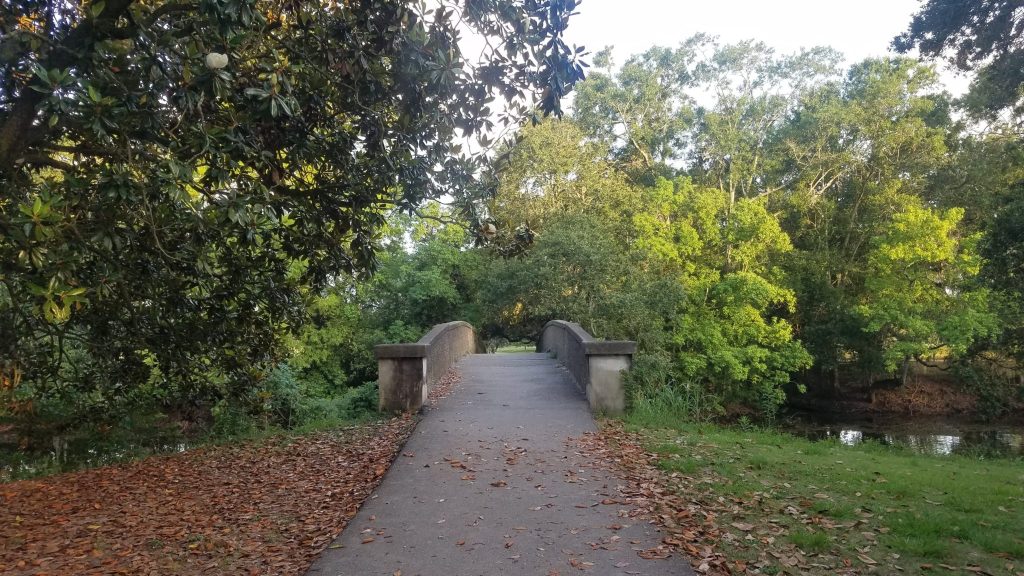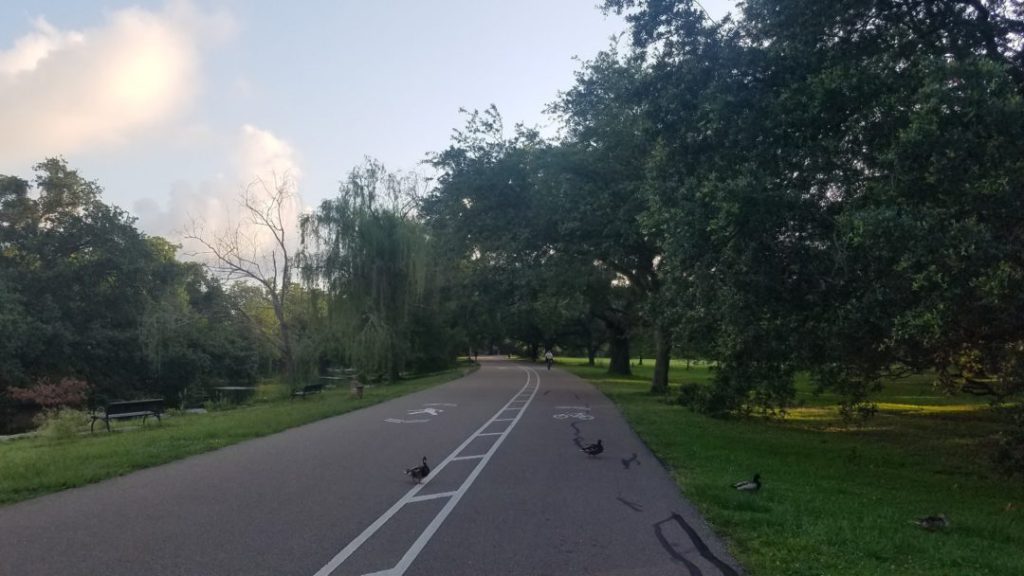Include a Topper!
-
Happy Birthday Banner
$9.00
Add Ons
Your cart is currently empty!


Recently, we wrote a blog post about the 1984 New Orleans World’s Fair, known more formally as the 1984 Louisiana World Exposition. If you talk to New Orleanians who were in the city during that time, the six-month-long event was a memorable one. In fact, you can still find relics — both in New Orleans and beyond.
What many locals don’t realize, however, is that exactly 100 years before that famous festival, New Orleans hosted another: the 1884 World’s Industrial and Cotton Centennial Exposition.
And it was a big deal, because World’s Fairs were far more consequential back then. They’re where broadcast television was first inaugurated and where the Eiffel Tower was unveiled. A World’s Fair is how we Earthlings learned about cultures on the opposite side of the globe, and where our ancestors were introduced to the newest technologies — everything from electric street cars to the ferris wheel to space travel.
These massive events, however, weren’t money-makers for their host cities. Rarely did they turn a profit. More often, they were about prestige. A World’s Fair was a chance to show the whole of humanity how your tiny speck of the globe was pushing humanity forward in exciting ways.
It’s with that motivation that the 1884 World’s Industrial and Cotton Centennial Exposition — known, shorthand, as the “Cotton Centennial” — came to New Orleans.

When the National Cotton Planters Association proposed a World’s Fair to celebrate the 100th anniversary of the cotton industry, New Orleans newspapers made a case that the Crescent City was the perfect location. Our city, after all, had some serious credentials. At the start of the decade, New Orleans was America’s 10th most populous city (though already experiencing a post-Civil War drop from third on that list in 1840).
But that’s not all. In the time of the Cotton Centennial, one-third of the world’s cotton passed through our port! And, notably, we also had the space to accommodate the more than 1 million visitors who would be arriving from across the planet to celebrate.
Much from this World’s Fair is now gone. Perhaps most notably, Louisiana State treasurer Edward A. Burke disappeared overseas, stealing approximately $1,777,000 — in 1884 dollars — which made up most of the fair’s budget.
Still, quite a bit remains if you know where to look. Here’s a list of some of the most notable remnants from the 1884 World’s Industrial and Cotton Centennial Exposition.
The Cotton Centennial’s largest contribution to New Orleans is undoubtedly Audubon Park. But, at the time of the fair, it looked very different from the space we know today.
The land was once home to area American Indians. Later, in the late-1700s, New Orleans’ first mayor, Etienne de Boré, lived here. Before becoming mayor in 1803, he founded the nation’s first commercial sugar plantation on the site (which was so big it included what is now the Uptown campus of Tulane University, as well). The massive space was willed to public use in 1850, and during the Civil War it was used alternately as a Confederate camp and a Union hospital. In 1866, it was an activation site for the 9th Cavalry all-African American unit known as the Buffalo Soldiers.

It wasn’t until 1871 that New Orleans decided the portion of the greenspace between the river and St. Charles Avenue would become an urban park. But it would be the World’s Fair a decade later that finally provided the impetus to make the site improvements needed for this urban park dream to become a reality.
During the World’s Industrial and Cotton Centennial Exposition, Upper City Park — as Audubon Park was called at the time — was a site to behold! The fair opened on Dec. 16, 1884, and featured exhibits from all 38 states, every U.S. territory (except flippin’ Utah, who we will never forgive), as well as countries from around the world. Electric lights, a novelty at the time, were strewn across large sections of the fairgrounds. And the main exhibit building was 1.7 million square feet — the largest wooden structure ever built!
Foreign and domestic dignitaries arrived via the Mississippi River on steamship, and daily attractions included fireworks, balloon ascensions, parades, concerts, and special days honoring various states, groups and ethnicities. It was said to take more than four days to traverse the 35 miles of exhibits and displays!

Most of the exhibition buildings were demolished in the 1890s, which is when the famous Olmstead family — the designers of New York City’s Central Park, as well as many more of the United States’ most iconic greenspaces — set to work on the Audubon Park we know today.
A final remaining glass-roofed structure known as Horticulture Hall was destroyed by a 1915 hurricane. Though there’s little specifically in the park to remind us of the Cotton Centennial, the entire park is a reminder of that exciting time in our city’s history.
There is one “street,” however, that still harkens back to the fair. Exposition Boulevard is actually a sidewalk on the eastern, or downriver side of Audubon Park that runs in front of many of the neighborhood’s most beautiful residences. It might seem strange to us that a sidewalk is called a “boulevard,” but in 1884, the road was paved with shells, allowing mule-drawn carriages to reach the Exposition’s entrance. The houses weren’t there yet, but this stretch along Audubon Park would soon become a very desirable place to live.

As mentioned above, all 38 U.S. states at the time — as well as each territory other than cursed Utah — hosted exhibits at the fair showing off what made them unique. Part of the Alabama State exhibit included a mineral display.
When the World’s Fair ended on June 1, 1885, Alabama’s representatives apparently forgot to pack up one notable object from that display: a substantially-sized boulder of iron ore.
Today, the boulder — as tall as a human — sits in the middle of the Audubon Park Golf Course. Several generations of New Orleanians were told it was actually a chunk of a meteorite that hit the area in the 1880s, a rumor some still believe. But, alas, it’s just a hunk of Alabama iron ore!

A terracotta company presenting at the World’s Fair wanted to show what could be accomplished with their material. They displayed a statue and monolithic base dedicated to one of the nine muses, Clio, the goddess of history. The statue was appropriately called Peace, the Genius of History.
At the close of the fair, local resident George Dunbar purchased the terracotta piece and donated it to the City of New Orleans. The city placed the statue in a recently created park dedicated to local 19th century historian and politician, Charles Etienne Arthur Gayerre.
The tiny Gayarre Place is bordered by Esplanade Avenue, Bayou Road and North Tonti Street. The original statue was vandalized in 1938 and was subsequently replaced with the current marble and cement version. The red, terracotta base is the original from the Cotton Centennial.

An adult, one-day ticket to the 1884 World’s Industrial and Cotton Centennial Exposition cost 50 cents. A children’s ticket was 25 cents, and school children could get in for just 15 pennies.
One of the double cast-iron gateways attendees might have entered through is now the Elysian Fields Avenue entrance to Hebrew Rest, a Jewish cemetery located on Gentilly Ridge.
If you walked into the Japanese pavilion at the World’s Fair, as so many did, you would have been gifted a beautiful, though unfamiliar-looking, plant known as a water hyacinth. The plant featured attractive lavender blossoms and was from the Amazon region of Brazil. (Why the Japanese contingent was doling it out, I do not know.)
Today the water hyacinth can be found in great numbers in many of Louisiana’s bayous, and that’s not a good thing. But how did it happen?
Well, recipients of the gift, either planted it or disposed of it. Either way, the hyacinth — which multiplies at an infamously alarming rate — has created a problem we’re still dealing with today.

After multiplying, the plant creates an impenetrable barrier. Not only does that make it nearly impossible to navigate the waterways in which the water hyacinth grows, but it also blocks sunlight from reaching plants below the surface and suffocates fish by depleting their oxygen.
Volunteer groups have worked at removing the invasive species from Bayou St. John, but touching the plant causes part of it to break off, spreading its seeds. More intense spreads have taken place in City Park, Jean Lafitte National Preserve, and many more of Louisiana’s waterways.
This is a remnant of the fair New Orleanians wish didn’t remain!
A Reconciliatory Bell
There are also quite a few relics from the 1884 World’s Fair that remain on display outside of the Crescent City. Some are very near, while others are not.
Of particular note, did you know Philadelphia’s Liberty Bell — originally created in 1753 — made a guest appearance at the Cotton Centennial?
Remember, the Exposition was taking place less than two decades after the Civil War. So one objective of the fair was to show the world, as well as our own country’s northern states, that there was a New South focused on progress and building manufacturing might instead of hanging onto old, racist ways of thinking.
For their part, northern states were also interested in showing reconciliation was underway. Sending the Liberty Bell to New Orleans for part of the World’s Fair was Pennsylvania’s way of doing just that.
A Haven for the Wealthy Remains a Haven for the Wealthy
The Banker’s Pavillion wasn’t built until approximately two months after the opening of the Cotton Centennial. A story published on Feb. 8, 1885, in The Daily Picayune said the Pavilion was built by local architect Thomas Sully, “for the comfort of visiting and resident bankers while at the Exposition.”
Designed as a blend of Italianate, Queen Anne, Eastlake and Asian-inspired architectures, the building sat on what is today the park’s golf course. Once the fair closed, the building was sold, placed on a barge and shipped to Port Allen in West Baton Rouge Parish. There, it became the main building of the Poplar Grove sugar plantation, though it has undergone several renovations and changes in the following century-plus.

Some Other Nation’s Treasure
One of the fair’s finest buildings was from Mexico, created to house their exhibit. It wasn’t particularly large, but the design — in the neo-Mudejar style popular in 19th century Spain — was eye-catching. Engineer José Ramon Ibarrola is credited with the octagonal building topped with a glass cupola. Its wealth of intricate Moorish decorative flourishes earned it the nickname “The Alhambra Palace,” after the famous Moorish landmark in Granada, Spain.
At the Exposition, the inside housed displays of various minerals mined in Mexico, but it was the structure itself that stole the show.

Fortunately, the building was constructed mostly of cast iron panels. This meant it could be disassembled easily, moved and then reassembled in a new location. It’s this feature which explains how it also made an appearance at St. Louis’ 1902 World’s Fair, and how it is now a National Artistic Monument in Mexico City — known there as the Morisco Kiosk, or the Moorish Kiosk.
The Morisco Kiosk is the centerpiece of Mexico City’s Alameda Park. For a time it was the site of drawings for Mexico’s national lottery, but today it is a Mexican national treasure. Unlikely, it remains one of the most elaborate and enduring relics of New Orleans’ 1884 World’s Industrial and Cotton Centennial Exposition.